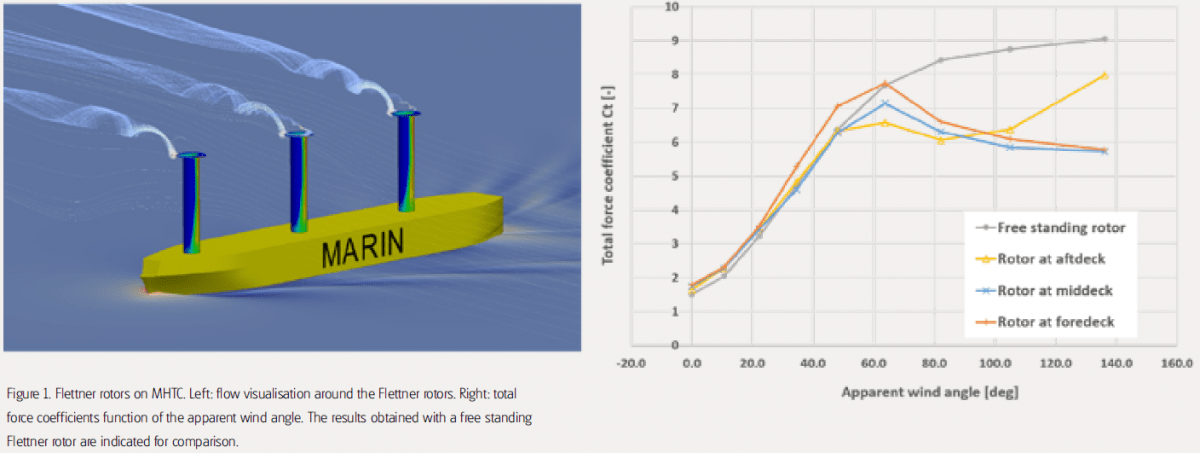While previously the performance of wind propulsors was essentially obtained from wind tunnel tests or CFD without considering the ship, it is now understood that interaction effects between a vessel and its wind propulsors cannot be omitted.
The Flettner rotor is the most popular device in recent market introductions of Wind Assisted Ship Propulsion (WASP) vessels. Flettner rotors provide shipowners with a low operational impact wind propulsion concept, with a reported overall power saving of up to 15%. Even though Flettner rotors are often retrofitted, recent newbuild projects are incorporating the rotors in the ship design phase, which enables them to be fully integrated and achieve even bigger savings.
In the literature, the performance of wind propulsors is generally derived from wind tunnel testing data or CFD analysis examining undisturbed incoming flows. Those experimental or numerical databases are often omitting the interactions with the ship and its superstructures, which may lead to the incorrect assessment of the wind propulsion performance. We wanted to find out more about these interaction effects.
A numerical approach using RANS simulations has been developed to estimate the effects of the interaction between the MARIN Hybrid Transition Coaster (MHTC) and its three Flettner rotors. The performance of the Flettner rotors positioned on the deck of the vessel is compared to the performance of a free-standing Flettner rotor.
Large changes in forces on the Flettner rotors were found, compared to the performance of a free-standing Flettner rotor, see Figure 1. Omitting these interactions in the design or retrofitting phase can therefore lead to incorrect power saving expectations.
Interaction effects are found to depend on both the spin ratio and the apparent wind angle of the Flettner rotor. The largest performance losses are found under beam wind conditions with high spin ratio.
Accounting for these interactions during the design or retrofitting phase of a WASP vessel will lead to an enhanced design concept. However, adjustments to the deck arrangement with a rounding to avoid sharp edges or a modification to the dimensioning of the devices can already be sufficient to improve these interactions. MARIN is continuing its research on the topic in 2021 to further understand these interaction effects.


